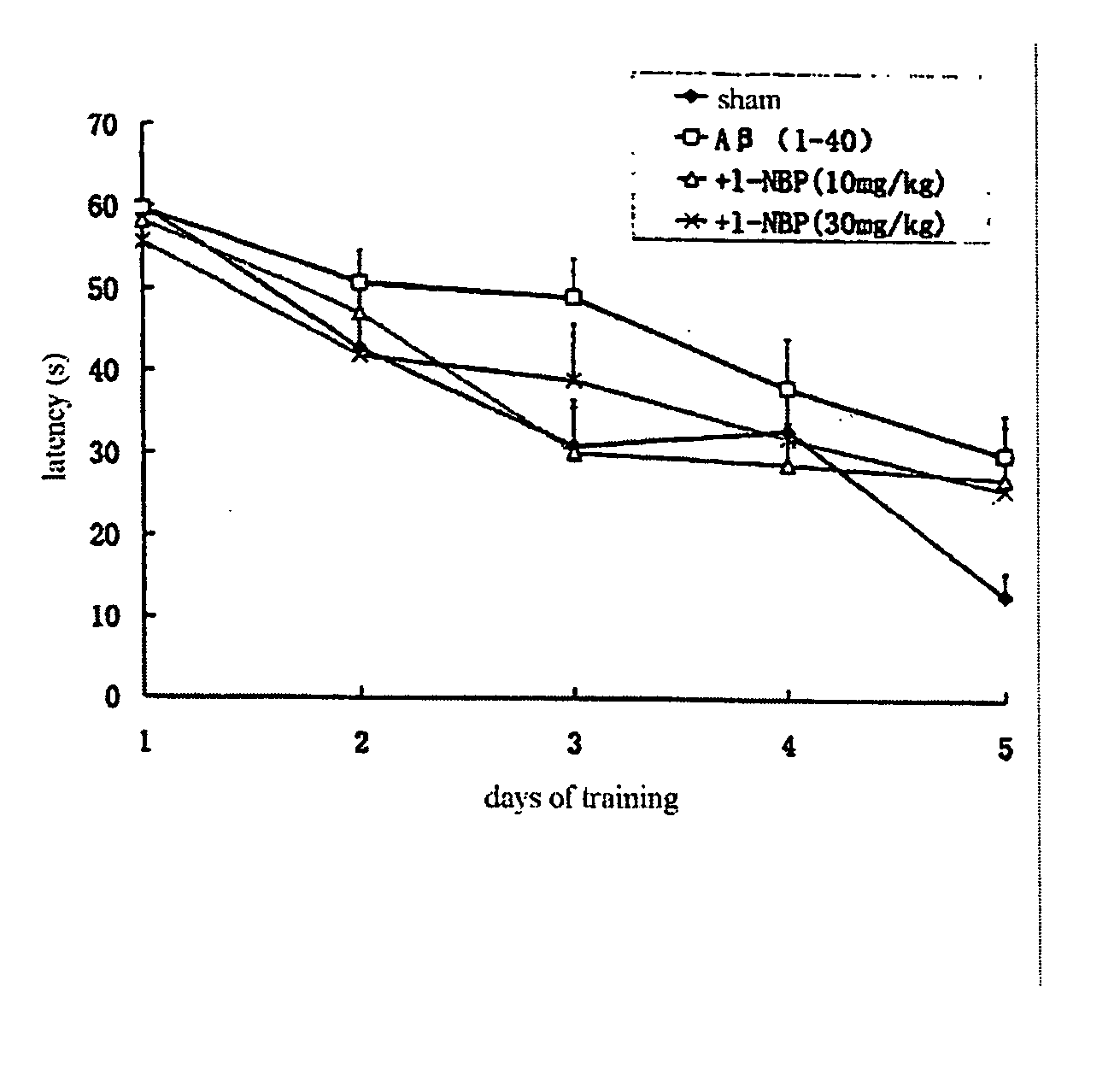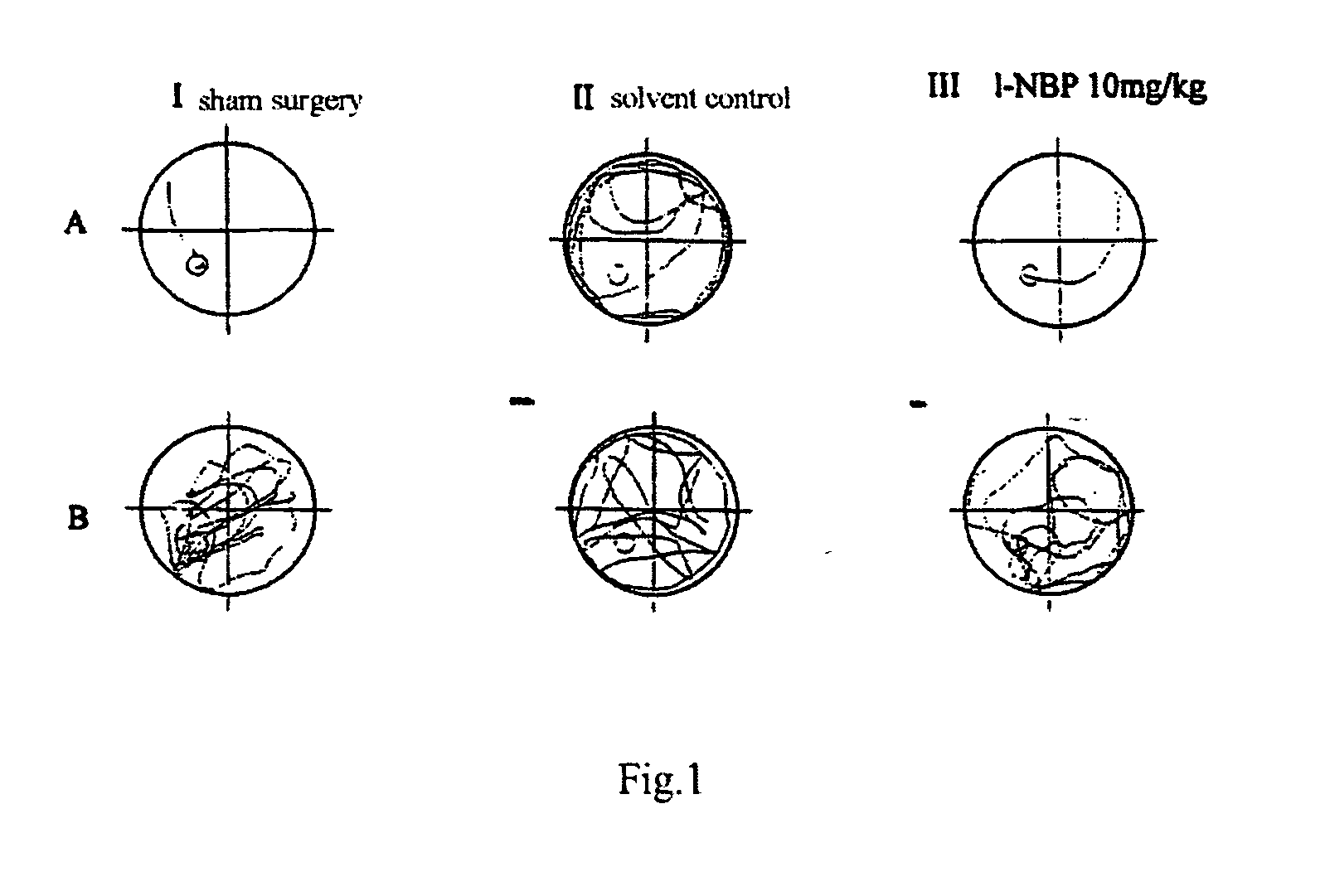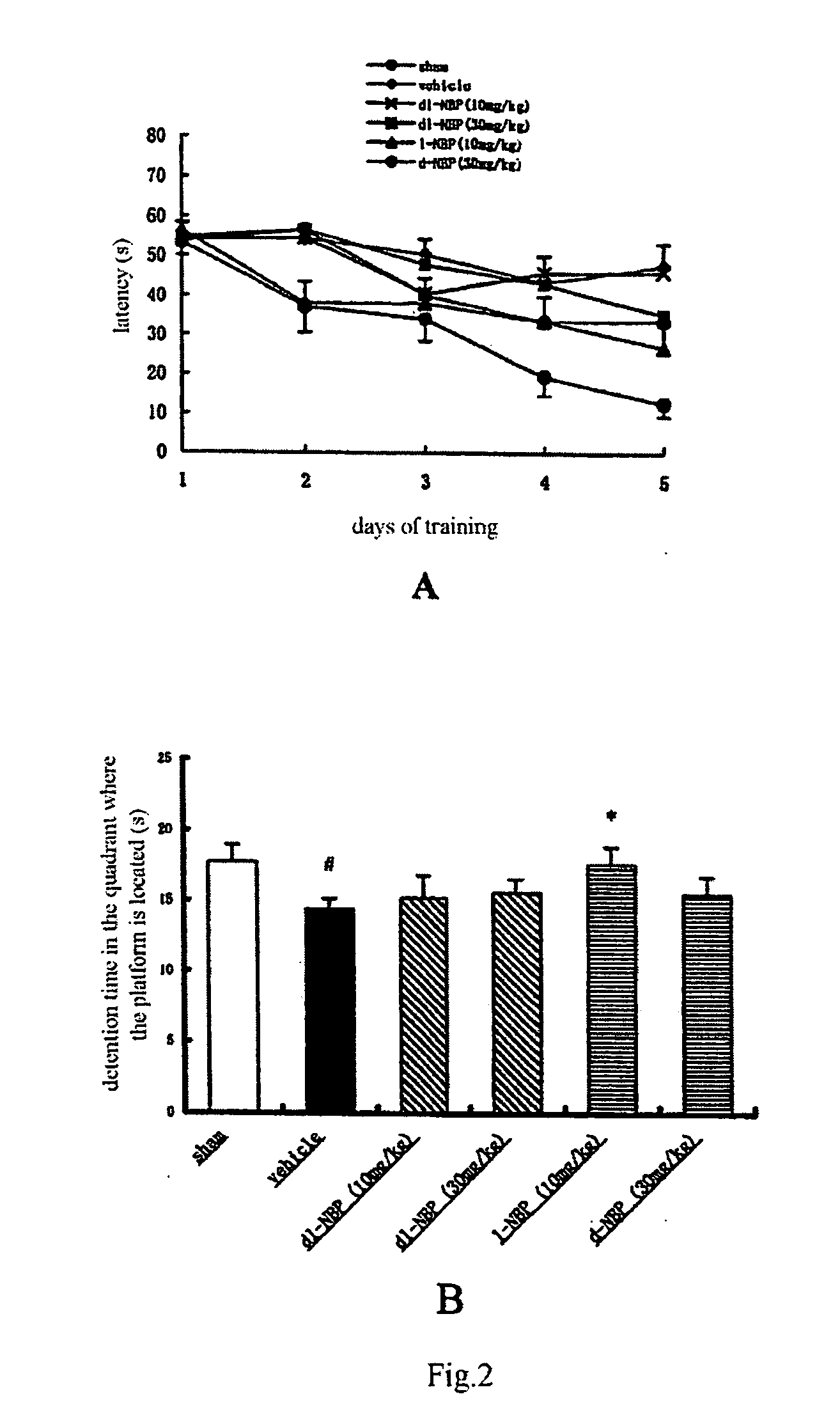Application of L-N-Butylphthalide in Preventing and Treating Dementia
a technology of lnbutylphthalide and lnbutylphthalide, which is applied in the direction of biocide, drug composition, anti-noxious agents, etc., can solve the problems of reducing the activity of gsh-px, and reducing the damage of oxidative damag
- Summary
- Abstract
- Description
- Claims
- Application Information
AI Technical Summary
Benefits of technology
Problems solved by technology
Method used
Image
Examples
example 1
1. Example 1
Therapeutic Effects of L-NBP on Vascular Dementia, One of Senile Dementias
Materials and Methods
Reagents and Chemicals
[0042] L-, D-, DL-NBP were synthesized in house, with optical and chemical purity of >98%. Optical rotations were −66.49, +66.88, and 0 degree respectively. They were formulated in vegetable oil.
Equipments
[0043] Morris' Water Maze Automatic Monitor, Step-through apparatus were developed by the instrumental and electronic lab of the Institute of Materia Medica, Chinese Academy of Medical Sciences.
Preparation of 2-VO Model
[0044] Male Wistar rats, which were 10-weeks old and weighed approximately 280 grams, were used. 5 animals were placed in each cage, while the room temperature was kept at 23° C., with food and water freely accessible. Rats were anaesthetized with sodium pentobarbital (40 mg / kg), then bilateral common carotid arteries were exposed and the envelope of common carotid arteries and vagus nerve was carefully separated. For the hypoper...
example 2
L-NBP Could Significantly Ameliorate Symptoms of Senile Dementia Induced by Amyloid-β (1-40)
Materials and Methods
Reagents and Chemicals
[0058] L-NBP was synthesized in house and was formulated into vegetable oil. Aβ (1-40) was purchased from Sigma. Alzet brain micro-osmotic pump perfusion apparatus was purchased from DURECT, U.S.
Equipments
[0059] For Morris' Water Maze Automatic Monitor and experimental protocols, reference may be made to the experiments of learning and memory damage of rats induced by brain hypoperfusion.
Model Preparation
[0060] Male Wistar rats, which were 10-weeks old and weighed approximately 280 grams, were used. One animal was placed in one cage, while the room temperature was kept at 23° C., with food and water freely accessible. Rats were anaesthetized with sodium pentobarbital (40 mg / kg), and were fixed to stereotaxic apparatus with the position of ventral decubitus. Head skin was cut open, a cannula for Aβ (1-40) perfusion was implanted into right ...
PUM
| Property | Measurement | Unit |
|---|---|---|
| detention time | aaaaa | aaaaa |
| temperature | aaaaa | aaaaa |
| diameter | aaaaa | aaaaa |
Abstract
Description
Claims
Application Information
 Login to View More
Login to View More - R&D
- Intellectual Property
- Life Sciences
- Materials
- Tech Scout
- Unparalleled Data Quality
- Higher Quality Content
- 60% Fewer Hallucinations
Browse by: Latest US Patents, China's latest patents, Technical Efficacy Thesaurus, Application Domain, Technology Topic, Popular Technical Reports.
© 2025 PatSnap. All rights reserved.Legal|Privacy policy|Modern Slavery Act Transparency Statement|Sitemap|About US| Contact US: help@patsnap.com



